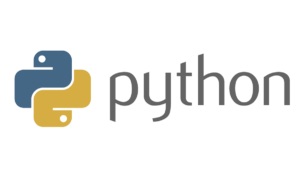Основы словаря Python были рассмотрены в статье ниже Словарь
Некоторые словарные методы обсуждаются в этой статье.
1. str(dic) :- Этот метод используется для верните строку, обозначая все ключи словаря их значениями.
2. items() :- Этот метод используется для верните список со всеми ключами словаря со значениями.
# Python code to demonstrate working of
# str() and items()
# Initializing dictionary
dic = { 'Name' : 'Nandini', 'Age' : 19 }
# using str() to display dic as string
print ("The constituents of dictionary as string are : ")
print (str(dic))
# using str() to display dic as list
print ("The constituents of dictionary as list are : ")
print (dic.items())
Выход:
The constituents of dictionary as string are :
{'Name': 'Nandini', 'Age': 19}
The constituents of dictionary as list are :
dict_items([('Name', 'Nandini'), ('Age', 19)])3. len() :- Возвращает количество ключевых сущностей элементов словаря.
4. type() :- Эта функция возвращает тип данных аргумента.
# Python code to demonstrate working of
# len() and type()
# Initializing dictionary
dic = { 'Name' : 'Nandini', 'Age' : 19, 'ID' : 2541997 }
# Initializing list
li = [ 1, 3, 5, 6 ]
# using len() to display dic size
print ("The size of dic is : ",end="")
print (len(dic))
# using type() to display data type
print ("The data type of dic is : ",end="")
print (type(dic))
# using type() to display data type
print ("The data type of li is : ",end="")
print (type(li))
Выход:
Размер dic составляет : 3
Тип данных dic-это :
Тип данных li является : 5. copy() :- Эта функция создает неглубокую копию словаря в другой словарь.
6. clear() :- Эта функция используется для очистки содержимого словаря.
# Python code to demonstrate working of
# clear() and copy()
# Initializing dictionary
dic1 = { 'Name' : 'Nandini', 'Age' : 19 }
# Initializing dictionary
dic3 = {}
# using copy() to make shallow copy of dictionary
dic3 = dic1.copy()
# printing new dictionary
print ("The new copied dictionary is : ")
print (dic3.items())
# clearing the dictionary
dic1.clear()
# printing cleared dictionary
print ("The contents of deleted dictionary is : ",end="")
print (dic1.items())
Выход:
Новый скопированный словарь :
dict_items([('Age', 19), ('Name', 'Nandini')])
Содержимое удаленного словаря : dict_items([])


